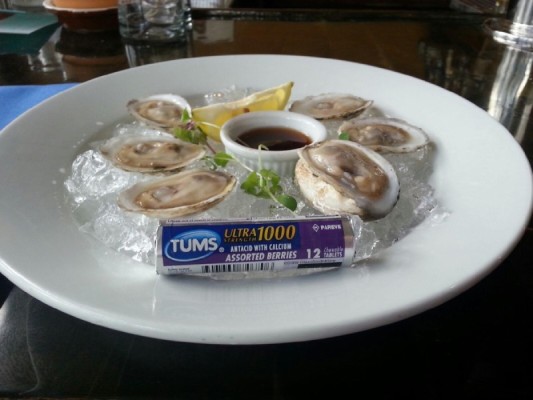
Every so often life throws you a chance to be a part of something special.
Hopping aboard the Anderson’s Neck train didn’t require a whole lot of soul-searching and sleepless nights on my part. For as long as I can recall, the outdoors has been a source of peace and a place for me to reset mentally when work or life are stressing me out. So when the chance came to be a part of a company with a core mission of restoring the health of the delicate Chesapeake Bay watershed, I dove in.
(Dove in, literally. Farming oysters is a wet and messy business. Did you know “oyster harvester” was featured in Season 1 of Mike Rowe’s Dirty Jobs?)
The several hundred acres granted to the Anderson family in 1662 is a virtually unspoiled wilderness that teems with wildlife from rabbits and deer to bald eagles, ospreys and blue herons. When Michael and Laura bought the land in 2010 with the aim of preserving it, they didn’t immediately think “oyster farm,” but an ever-increasing body of research shows that farming oysters was probably the best thing they could have done to achieve that goal.
If you’ve been paying any attention to the blog, you already know that our oysters — in fact, all oysters — filter the water by removing nutrients that cloud the water. Cloudy water threatens the natural habitat of the many fish and birds that are vital to supporting all those majestic bald eagles and herons that greet Jesse and I each morning when we get to the farm.
So when Mike and Laura decided to put a few million oysters in the water, they could hardly have made a more impactful choice when it comes to preserving The Neck and ultimately the Chesapeake Bay.
And the benefits of oysters (beyond their long-held reputation as a, uh, stimulant) keep piling up. Researchers are increasingly looking to the bivalve as potent medicine for sick waterways.
A recent study coauthored by the Virginia Institute of Marine Science’s Roger Mann showed that healthy oyster reefs could bring down the high acid levels caused by burning fossil fuels in all the world’s waterways. These high acid levels are threatening oyster populations worldwide, in part because there are so few wild oyster reefs left to help combat them.
When oysters die, the calcium from their shells actually breaks down into the water and does its part to bring down the acidity.
Quoted in a Daily Press article, Mann said: “Oyster shells are like slow-dissolving TUMS in the belly of the Chesapeake Bay. As ocean water becomes more acidic, oyster shells begin to dissolve into the water, slowly releasing their calcium carbonate — an alkaline salt that buffers against acidity. An oyster reef is a reservoir of alkalinity waiting to happen.”
But even as the oysters are contributing to bringing down the acid levels, they are also threatened by them. Mann wonders later in the article that despite the millions being spent by the state to repopulate the struggling wild oyster beds: “Could we reach a tipping point where increasing acidity so overwhelms the decreased buffering capacity of dead shells that it then begins to significantly affect live oysters, further limiting their ability to add shell to the alkalinity buffer? If so, we could end up with a negative feedback loop and a worst-case scenario.”
With all these headwinds, getting oysters to survive in the water will be increasingly in the hands of the farmers who baby their oysters through every phase of development.
And get absolutely filthy doing it.
Mike Rowe needs to visit Anderson’s Neck!

